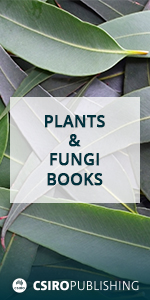
Functional Plant Biology
Volume 46 Number 6 2019
FP18323Hormonal regulation of cereal endosperm development with a focus on rice (Oryza sativa)
The yield and quality of cereal crops, including rice, rely on hormone-dependent signalling processes taking place during grain development. In this review we discuss evidence for more than one role for auxin, highlight key gaps in knowledge relating to the involvement of other plant hormones (cytokinins, ethylene, gibberellins and abscisic acid) and their combined influence on grain size, and note problems arising from conflicting data. We suggest future work needed to guide further development of resilient and high-yielding cereal varieties.
Increasing yield through an increase of flower unit number has been a breeding priority for rice, but the trade-off between flower number and grain filling has negated potential gains. Of the various strategies considered, control of ethylene production in flower head has the greatest potential to improve yield limit. High level ethylene production dampens reserve food synthesis and undermines filling of developing grains.
FP18189In silico characterisation and functional validation of chilling tolerant divergence 1 (COLD1) gene in monocots during abiotic stress
ABA and G protein-coupled receptor (GPCR) play a major role during abiotic stress conditions. The chilling tolerant divergence 1 (COLD1) gene containing ABA_GPCR and Golgi pH receptor (GPHR) domain receptor was isolated from rice, maize, sorghum and sugarcane, and was subjected to in silico and gene expression analysis. Our results on gene expression and evolutionary relationships helped us to understand the importance of COLD1 during abiotic stress condition in selected monocots, which will have an impact on crop improvement programs around the world.
FP18242Phosphatidic acids mediate transport of Ca2+ and H+ through plant cell membranes
Phosphatidic acids (PAs) are components of biomembranes that play essential roles in lipid signaling and trafficking. We demonstrated that PAs induce ionophore-like effects transporting Ca2+, H+ and Mg2+ in maize root membrane vesicles and trigger cytosolic Ca2+ elevation in aequorin-transformed root protoplasts. These data suggest that PAs can function as ionophore-like transporters for Ca2+ and Mg2+ in plant membranes.
FP18243Functional study of Csrbohs in defence response against Xanthomonas citri ssp. citri
Plant rbohs constitute a multigene family that is involved in multiple signalling pathways, including defence response, but the citrus rbohs are poorly understood. Here, six Csrbohs were identified in citrus, of which CsrbohD was most highly expressed in both kumquat and grapefruit and participated in resistance to Xanthomonas citri ssp. citri (Xcc). This finding shows CsrbohD promotes resistance to Xcc and has the potential to be a new candidate to breed citrus varieties with Xcc tolerance.
Plants are often exposed to adverse environmental factors that have an effect on the photosynthetic apparatus. Here, we investigate the acclimation of tomato plants to moderately high temperature and light intensity can lead to the development of tolerance to photoinhibition. The study sheds light on the mechanisms underlying the acquired tolerance to high light intensity and the strategy of plants to cope with light energy that exceeds the needs of photosynthesis.
Plants adjust the relative sizes of light-harvesting pigment-protein complexes in the antennae of both photosystems to the spectral composition light in the shade. Our holistic, in situ parameterisation of PSII functional and optical cross-sections showed an adjustment in PSII antenna complex pools participate that was 3-fold larger than previously thought. Fluorescence yields from the novel excitation protocols used may reflect the larger assembly of pigment-protein complexes now deemed to participate in state transitions.
FP18202Vigna unguiculata seed priming is related to redox status of plumule, radicle and cotyledons
Seed priming allows an improvement of germination performances as well as a tolerance to abiotic stress and higher yields. We have hypothesised that Vigna unguiculata seed priming is related to redox status of different parts of the embryo. We showed that priming allows activation of antioxidant enzymes, especially in the plumule, and that it causes an accumulation of ROS in radicle and the meristematic zones of the plumule.





